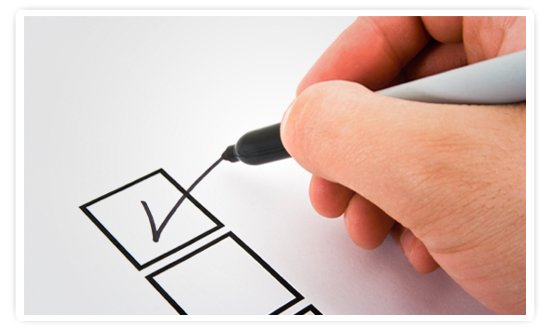Indian patent law provides protection to a new product or new process. From a patentability perspective, the product or process should have an inventive step along with industrial application. Additionally, the new invention should not fall under the category of invention that is non-patentable under Section 3 and Section 4 of the Indian Patent Act, 1970.
WHAT & HOW PATENT IS PROCESS
What is a Patent
A Patent rights granted by the Government to the inventor for practicing, making use, selling & importing the patent product or process. This normally done by disclosing patent document in public.
Validity of a Patent
The term of the patent is 20 years from the date of filing of the application. In case of PCT applications, it is 20 years from the date of filing of the International Application under PCT.
Patentable in India
Indian For an invention to become patentable, the following criteria apply: The invention should be novel, the invention should be non-obvious,Industrial application, It should not fall within the provisions of section 3 and 4 of the Patents Act 1970.
The procedure for the grant of a Patent starts with filing of the provisional specification
Along with the prescribed fees at the patent office followed by filing of complete specification within 12 months from the priority date which is followed by request for examination in the prescribed format, after the publication of the application after 18 months from the priority date. The applications are examined substantively and a first examination report stating the objections is communicated to the applicant. Application may be amended in order to meet the objections. If the applicant does not comply with the objection, the application will be abandoned.


For an invention to become patentable, the following criteria applies:
1. The invention should be novel
2. The invention should be non-obvious
3. Industrial application
4. It should not fall within the provisions of section 3 and 4 of the Patents Act 1970.
Section 3 of the Indian Patent Act, 1970 describes “what are not inventions”
The following are not inventions within the meaning of this Act:
a. An invention which is frivolous or which claims anything obviously contrary to well established natural laws;
b. An invention where the primary or intended use or commercial exploitation could be contrary to public order or morality or which causes serious prejudice to human, animal or plant life or health or to the environment;
c. The mere discovery of a scientific principle or the formulation of an abstract theory or discovery of any living thing or non-living substance occurring in nature;
d. The mere discovery of a new form of a known substance which does not result in the enhancement of the known efficacy of that substance or the mere discovery of any new property or new use for a known substance or of the mere use of a known process, machine or apparatus unless such known process results in a new product or employs at least one new reactant.
e. Explanation :For the purposes of this clause, salts, esters, ethers, polymorphs, metabolites, pure form, particle size, isomers, mixtures of isomers, complexes, combinations and other derivatives of known substance shall be considered to be the same substance, unless they differ significantly in properties with regard to efficacy;
f. A substance obtained by a mere admixture resulting only in the aggregation of the properties of the components thereof or a process for producing such substance;
g. The mere arrangement or re-arrangement or duplication of known devices each functioning independently of one another in a known way;
h. A method of agriculture or horticulture;
i. Any process for the medicinal, surgical, curative, prophylactic diagnostic, therapeutic or other treatment of human beings or any process for a similar treatment of animals to render them free of disease or to increase their economic value or that of their products.
j. Plants and animals in whole or any part thereof other than micro¬ organisms but including seeds, varieties and species and essentially biological processes for production or propagation of plants and animals;
k. A mathematical or business method or a computer programme per se or algorithms;
l. A literary, dramatic, musical or artistic work or any other aesthetic creation whatsoever including cinematographic works and television productions;
m. A mere scheme or rule or method of performing mental act or method of playing game;
n. A presentation of information;
o. Topography of integrated circuits;
p. An invention which in effect, is traditional knowledge or which is an aggregation or duplication of known properties of traditionally known component or components.
There are two routes for applying abroad:
1. Convention Route: An Indian national can apply to any of the 173 countries that are party to the Paris Convention for the Protection of Intellectual Property (called the Paris Convention in short and the countries are called Convention Countries) within 12 months of applying in India and claim priority of the earliest filed application in India. This way the applicant has the choice of entering several countries within a year’s time of filing in India.
2. Patent Cooperation Treaty (PCT) Route: This is another way of applying in a foreign country and PCT is administered by the International Bureau (IB) of the World Intellectual Property Organization (WIPO). It begins with the International Phase and ends with the National Phase. The application filed in the International Phase is called the International Application (IA) and filing of this application makes the applicant eligible to enter 143 other countries that are signatories to the PCT via this application. There are three ways in which an Indian applicant can apply to IB:
I) File in India first and after six weeks and within 12 months of such filing, file the PCT International Application (IA) with India as the receiving office. If IA is filed within six weeks of filing in India, permission u/s 39 has to be taken from the Indian Patent Office.
II) File the IA at the Indian Patent Office as the receiving office. For this permission u/s 39 has to be taken first from the Indian Patent Office.
III) File the IA directly at the IB. For this permission u/s 39 has to be taken first from the Indian Patent Office.
If the last two options have been exercised, the applicant can enter India via National Phase Application within 31 months of the date of priority. This deadline is not extendable. The applicant can enter 143 other countries at the end of 30/31 months from the date of earliest priority. The date of filing the International Application is reckoned as the filing date in India.
The term of the patent is 20 years from the date of filing of the application. In case of PCT applications it is 20 years from the date of filing of the International Application under PCT.
To keep a patent in force renewal fees is payable at the expiration of second year from the date of the patent or of any succeeding year. In other words renewal fee has to be every year up to the completion of 20 years. Renewal fees can be paid beyond the due date within a period of 6 prescribed fees. If a patent is granted later than two years from the date of filing of the application, the fees which have become due in the meantime may be made within a period of 3 months from the date of recording the patent in the register. This time is also extendable by 6 months as described earlier.
Copyright © 2019 Krishlaw.com. All rights reserved. Designed By Portalwiz


